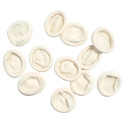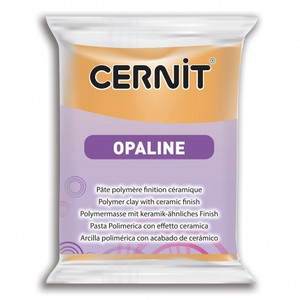
Latex-free material great for protecting your fingers from epoxy. They are also handy tools for working with polymer clay to prevent unwanted fingerprints. Here are some tips on how to use them effectively:
-
Firm Clay: Before you start crafting, ensure that your polymer clay is firm. Soft clay tends to show fingerprints more prominently. To firm up soft clay, you can either put it in the freezer or leach out some of its plasticizers.
-
Wear Gloves: Throughout your creative process, consider wearing gloves or finger cots to prevent fingerprints on your clay. This simple step can make a significant difference.
-
Cornstarch or Water: Rub the surfaces of your fingers and palms with cornstarch to avoid leaving fingerprints on the clay. Alternatively, you can use a bit of water.
-
Smooth with Oil: If you accidentally leave fingerprints, don’t worry! Rub a couple of drops of mineral or baby oil on the clay surface to erase them.
-
Cool Clay: Warm polymer clay is more prone to absorbing fingerprints. If you’re making beads, let them sit for a while before piercing them with bead wire or doing a final roll. You can even put them in the fridge briefly to firm them up.
-
Avoid Gripping: Hold your creations lightly and avoid squeezing them to prevent leaving fingerprints.
In case you do end up with fingerprints despite your best efforts, acetone works well for removing them from polymer clay. Dip a Q-tip into 100% acetone (found in automotive finishing departments or some paint stores) and gently rub away any flaws. The acetone will smooth out the surface by melting the plastic on the clay. Any smear marks will disappear once you bake the polymer clay. Remember to handle acetone with caution and keep it away from heat sources, pets, and children.
This package contains 50 finger cots.














